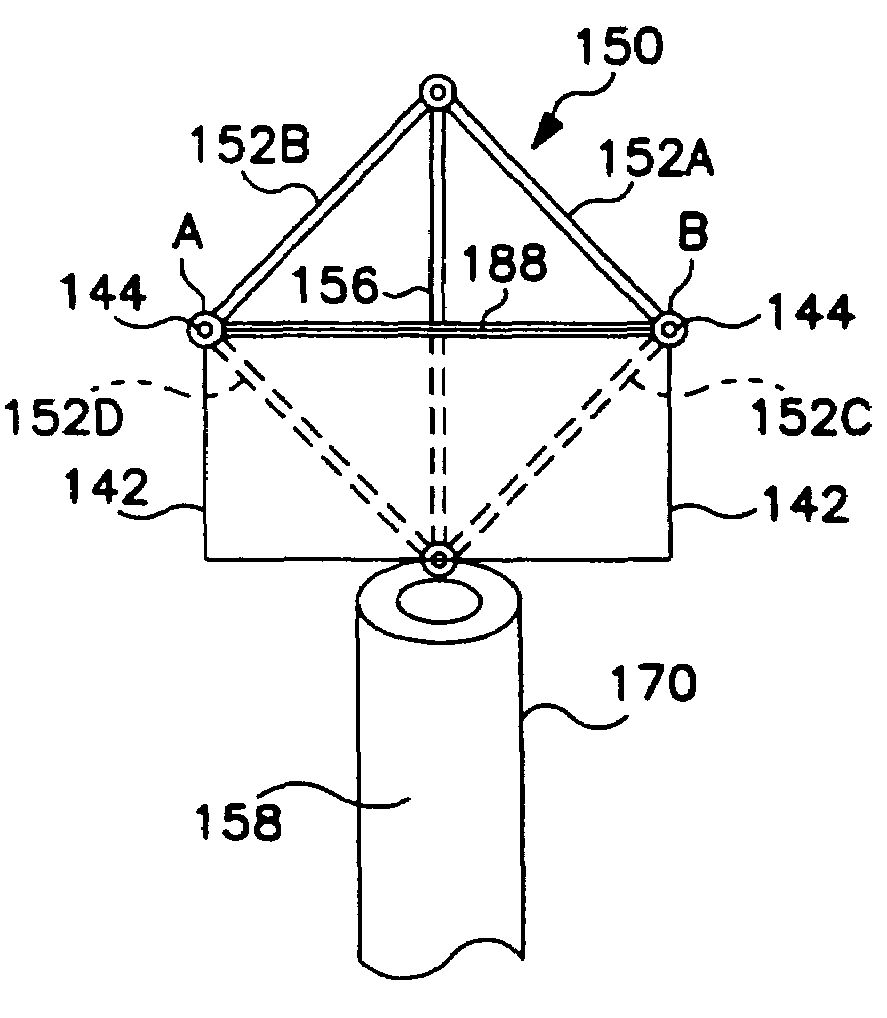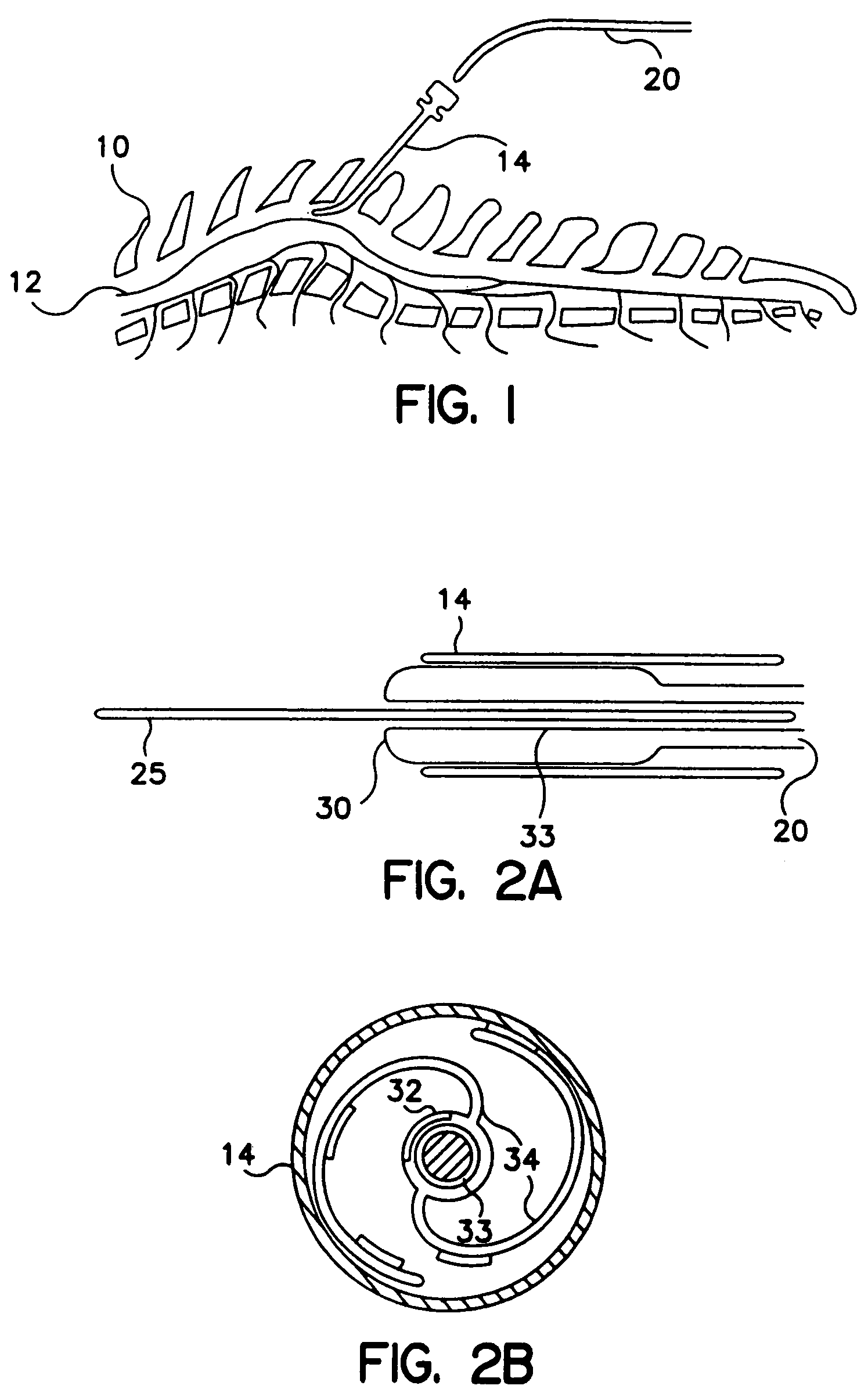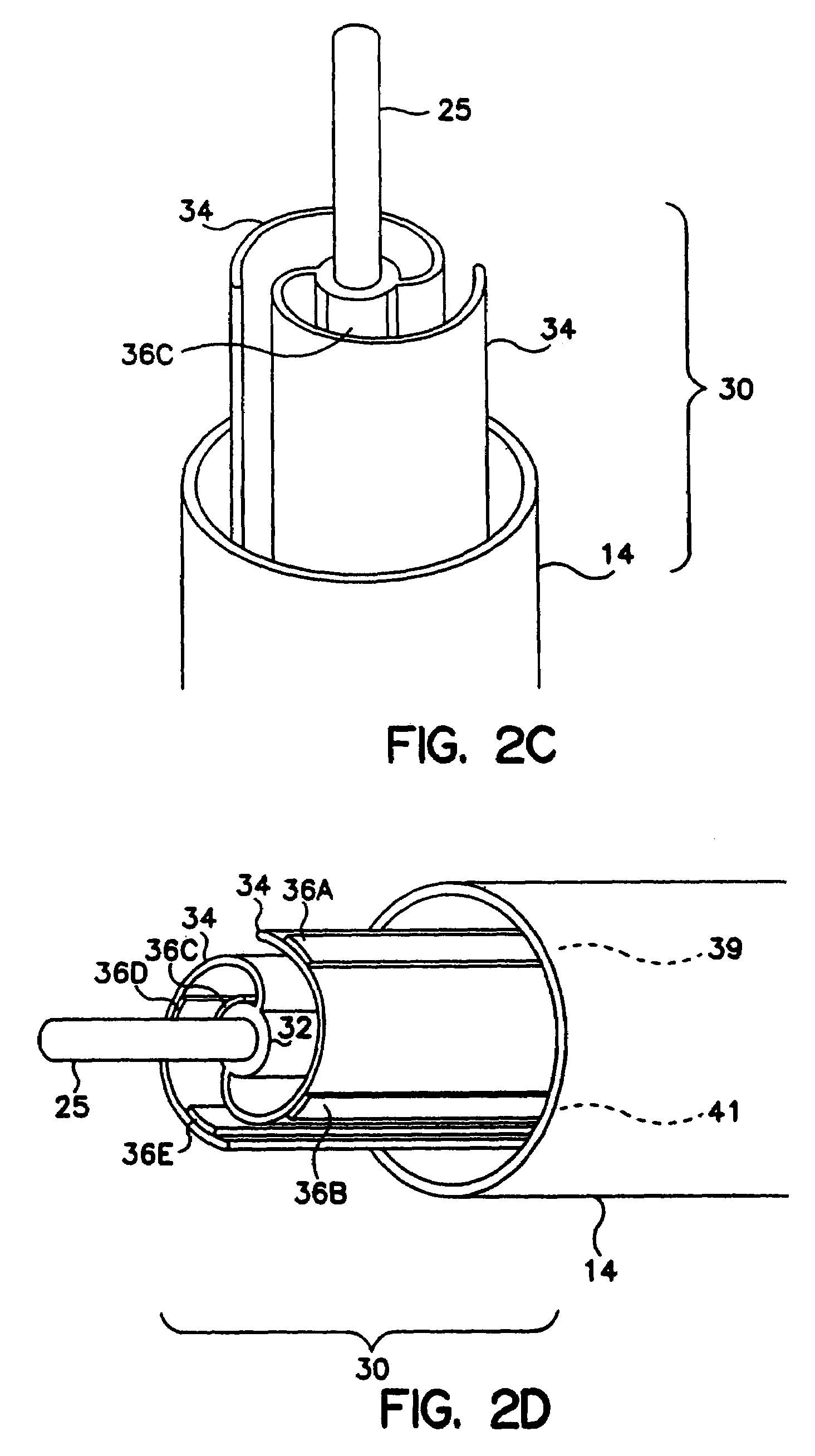Apparatus and method for expanding a stimulation lead body in situ
a technology of electrodes and lead bodies, applied in the field of implantable leads, can solve the problems of large passage through the vertebral bone, limited types of lead structures that may be incorporated into percutaneous leads, and the need for laminectomies, etc., and achieve the effect of convenient insertion
- Summary
- Abstract
- Description
- Claims
- Application Information
AI Technical Summary
Benefits of technology
Problems solved by technology
Method used
Image
Examples
Embodiment Construction
[0056]FIG. 1 illustrates a lead according to a preferred embodiment of the invention being utilized in an SCS implementation. In accordance with known techniques, a Tuohy needle 14 is positioned near the dura 12 of spine 10. Lead body 20 is inserted through the lumen of s Tuohy needle 14 and positioned near the dura 12. A proximal end (not shown) of lead body 20 is connected to a source device (not shown) which may be a pulse generator, in the case of electrical stimulation, or a drug pump in the case of drug therapy. Although the invention will be described herein with reference to SCS procedures and the embodiments described in relation to electrical therapy, it will be recognized that the invention finds utility in applications to other than SCS procedures, including other applications such as Peripheral Nervous System (PNS) Stimulation, Sacral Root Stimulation, Cortical Surface Stimulation or Intravecular Cerebral Stimulation. In addition, the invention finds applicability to SC...
PUM
 Login to View More
Login to View More Abstract
Description
Claims
Application Information
 Login to View More
Login to View More - R&D
- Intellectual Property
- Life Sciences
- Materials
- Tech Scout
- Unparalleled Data Quality
- Higher Quality Content
- 60% Fewer Hallucinations
Browse by: Latest US Patents, China's latest patents, Technical Efficacy Thesaurus, Application Domain, Technology Topic, Popular Technical Reports.
© 2025 PatSnap. All rights reserved.Legal|Privacy policy|Modern Slavery Act Transparency Statement|Sitemap|About US| Contact US: help@patsnap.com



